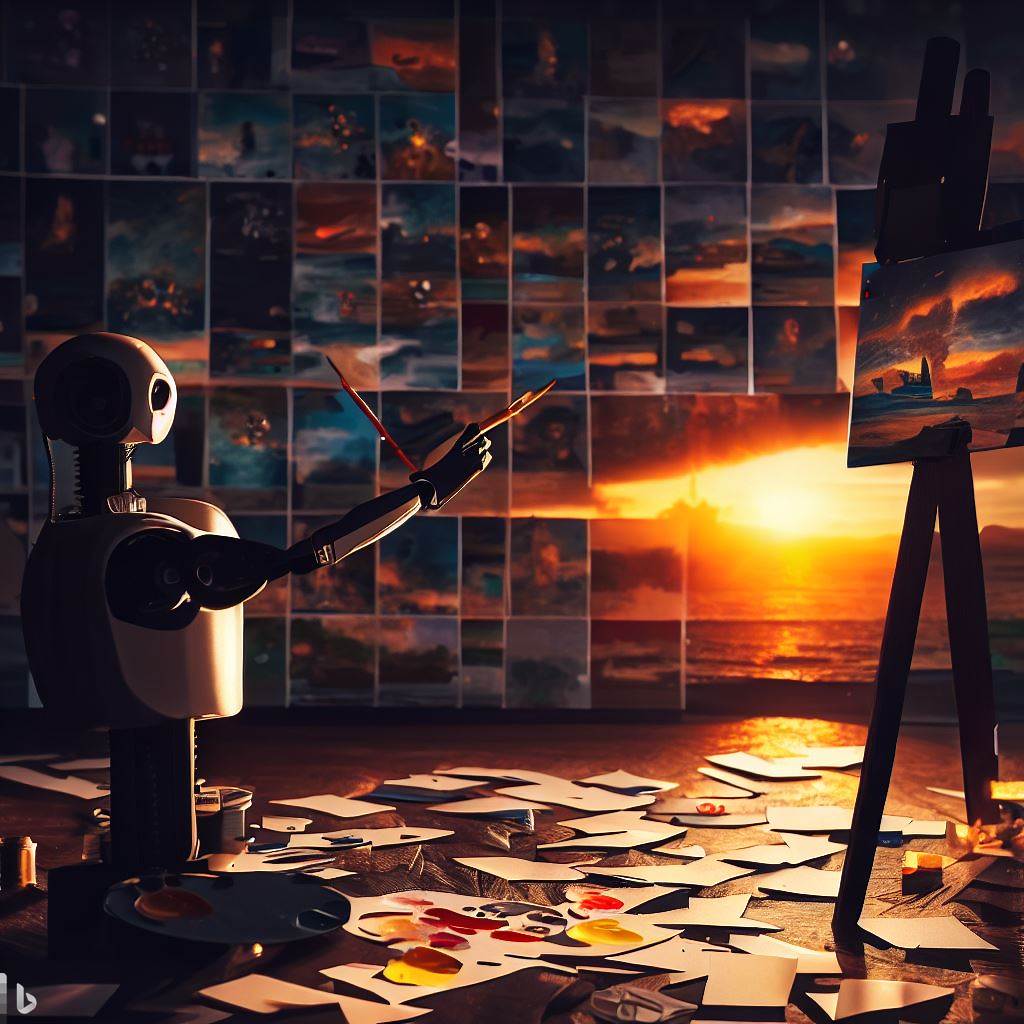AI. It’s all over the place today. It’s all over the news, and it’s popping up in apps and websites everywhere we look. Everyone is talking about AI, so let’s learn to talk about it, too! We’ll start how AI image creators work.
First, what is AI? It stands for artificial intelligence. Artificial means fake, manmade, not natural. Intelligence means smarts, ability to think. So AI means fake thinking or manmade smarts. Animals do not have AI because their intelligence is natural. AI is always in computers, where we have learned to copy thinking.
To know how the fake thinking works, we have to know what an algorithm is. An algorithm is an exact set of steps to take to solve a problem, usually math or computer related. It takes something you write, does a series of actions, and then gives you a result. The thing you write, telling it what to do, is called a prompt.
For AI image creators, an algorithm could be something like: (1) separate the prompt into smaller pieces, (2) take each piece search for pictures described by them, (3) compare the pictures for each piece, (4) find what is common in each one, (5) combine what is common from each piece together into one picture.
That’s a really simplified algorithm, but the basic idea is what matters. To explain it in a memorable way, think of how AI image creators work like a robot designed to paint.
You tell the robot to paint an orange and blue sunset. The robot first looks at thousands of photos that are blue, thousands that are orange, thousands that are a sunset, thousands that are a blue sunset, and thousands that are an orange sunset, it then copies bits and pieces of things it finds in those pictures into one painting.
To get the image at the top of the page, I gave this prompt to Bing Image Creator: “A robot holding a brush and palette painting a sunset on an easel in a dark room with photographs of hundreds of different sunsets scattered around the room and on the floor, dramatic lighting, masterpiece painting.” I wanted to show that it is a robot that copies countless things to make something new.
The thing about AI is that it can’t think. It can only copy things it sees, not knowing what is possible and what is impossible. Like in the picture at the top of this post, the sunset is coming through the wall and shining onto the floor. That’s because this image was made by AI, and it is copying the lighting from the sunsets it saw.
Notice how the floor looks like water? Oops, the computer made the floor look like the ocean because that’s what it saw in many of the sunset images it looked at. A human would know that this makes no sense, but AI just copies bits and pieces of what it finds.
The robot is also holding two brushes, one pointed at the painting, which is common in pictures of artists painting, and one pointing up, which is also common in pictures of artists painting because artists often hold it this way while thinking, looking, or getting more paint from the palette (which, if you noticed, is empty on the floor by the robot’s feet, while the paint is on the papers on the floor!). Of course, AI can’t think, “An artist always paints with one brush,” so it copied two because it saw both during its search.
The more you use AI image creators, the more you see how they “think” and work. The biggest weakness, I think, right now, is how it makes lots of useless objects around the images. It does this because it doesn’t know what things are and can only copy the idea of things. Look at things scattered around the floor of this image. Many of the things look like papers, which is cool, but none of the other objects are clearly anything.
On the left, behind the robot, there is something that looks like a brass can. Is it a paint can? Is it a metal coffee mug? It isn’t clearly anything.
What about the things slightly in front of the robot between it and the wall? It almost looks like a lot of different things but doesn’t actually look like anything specific. And I think there are two pictures sitting on top of it, but they are oddly shaped and unclear. Very messy.
Have you noticed the area under the easel which is holding the painting? It looks like torn and folded sticky notes, and the floor there looks like a collage of things layered together. It’s pretty bad, but it shows you well how the computer is trying to put together lots of little things it sees in other pictures.
This problem shows up a lot with humans and animals because it isn’t smart enough to count body parts and shapes. They often add extra fingers, bend legs and arms, and make deformed faces. It doesn’t know what real life looks like as a whole, just little bits here and there put together.
These problems show us how AI image creators work: copy bits and pieces of other images based on the prompt you gave it, without actually thinking about what things it is making.
So that’s how AI image creators work, in a simplified way. It’s getting better and better as programmers improve the algorithms they use to understand your prompt and create realistic images, but for now, it still has a long way to go. Now go try some out and get some firsthand experience!

